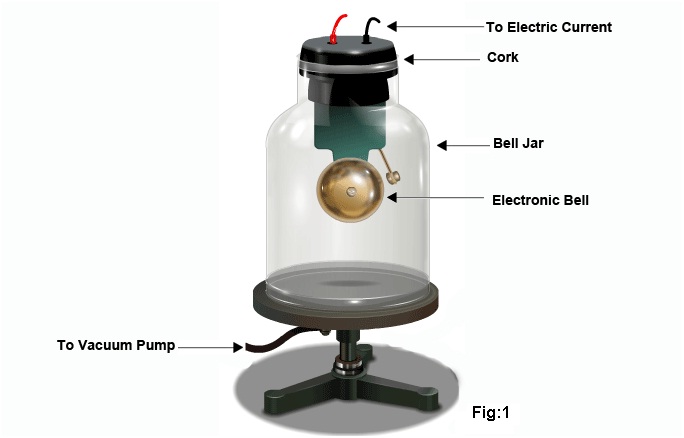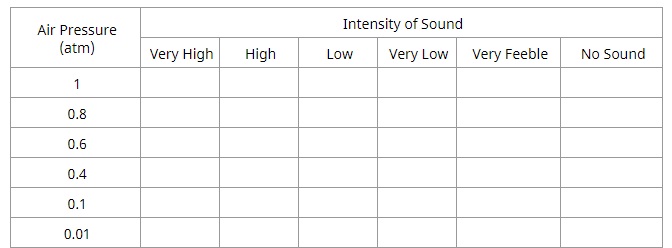





Published on Apr 02, 2024
A bell jar is a glass jar, similar in shape to a bell, and can be manufactured from a variety of materials (ranging from glass to different types of metals). Bell jars are often used in laboratories to form and contain a vacuum; they may also serve as display cases or transparent dust covers. It is a common science apparatus used in experiments.
A vacuum bell jar is placed on a base which is vented to a hose fitting, that can be connected via a hose to a vacuum pump. A vacuum is formed by pumping the air out of the bell jar.
The lower edge of a vacuum bell jar forms a flange of heavy glass, ground smooth on the bottom for better contact. The base of the jar is equally heavy and flattened. A smear of vacuum grease is usually applied between them. As the vacuum forms inside, it creates a considerable compression force, so there is no need to clamp the seal. For this reason, a bell jar cannot be used to contain pressures above atmospheric
To demonstrate that sound needs a material medium for its propagation.
Sound is a mechanical wave that needs a material medium like air, water, steel, etc., for its propagation. We can describe a sound wave by its frequency, wavelength and velocity. The sound wave is a longitudinal wave, ie., the particles of the medium vibrate in a direction parallel to the direction of the propagation of the wave.
A sound wave travels in the form of a longitudinal wave and it requires a material medium for its propagation. Sound always originates from some vibrating body. These vibrations are produced by tuning forks, drums, bells, the strings of a guitar, etc.
Human voice originates from the vibrations of the vocal chords and the sound from the musical instruments is due to the vibrations of the air columns. In some cases, the vibrating frequency of the source may be so very small or so very large that it is not audible to the human ear. The audible frequency ranges from 20 Hz to 20 kHz. The frequency below 20 Hz is called infrasonic and the frequency above 20 kHz is called ultrasonic.
The bell jar experiment is a common experiment used to demonstrate that sound needs a medium to travel.
A bell jar is a laboratory equipment used for creating a vacuum. It is so named as its shape is similar to that of a bell. A bell jar is placed on a base which is vented to a hose fitting that can be connected via a hose to a vacuum pump. By pumping the air out of the bell jar, the air pressure inside the jar can be varied.
The experiment is done by placing an electrical bell in the bell jar. As the air is pumped out of the sealed bell jar, the sound from the bell jar fades. At a particular vacuum, no more sound is heard from the bell, but we can see that the hammer continues hitting the gong and sound is produced. However, the sound is not audible to our ears because of the vacuum inside the jar. This demonstrates that the sound wave cannot travel through vacuum. That is, a sound wave needs a material medium for its propagation
• An air tight glass bell jar
• A sound producing toy
• Vacuum pump
• Cork


1. Arrange the apparatus as shown in the figure.
2. Connect the electric bell and the vacuum pump to the air tight glass bell jar.
3. Insert key to complete the circuit.
4. Reduce the air pressure inside the chamber by pumping out the air through the vacuum pump.
5. As the air in the jar is being pumped out, the sound becomes fainter, although it is the same current that is passing through the bell.
6. On reducing the air pressure further, the intensity of the sound reduces and stops

We have observed that as the pressure inside the bell jar decreases, the intensity of sound heard from the jar gradually decreases and stops. However, the bell is still continuing to ring.
• Manual of Secondary Science Kit for Classes IX and X - Published by NCERT
• Science textbook for class IX – Published by National Council of Educational Research and Training, New Delhi
• http://epathshala.nic.in/wp-content/doc/book/flipbook/Class%20IX/0964-Science/CHAP%2012/index.html